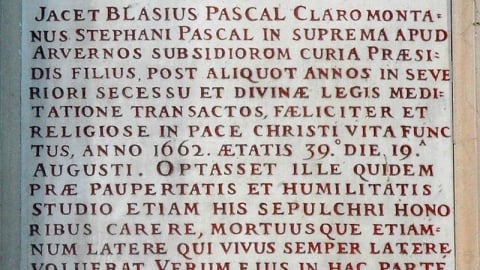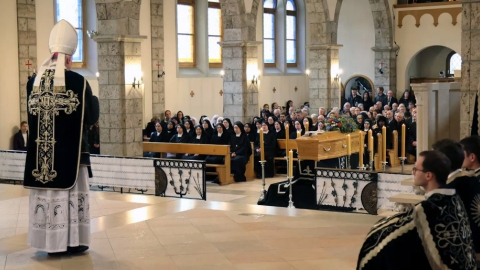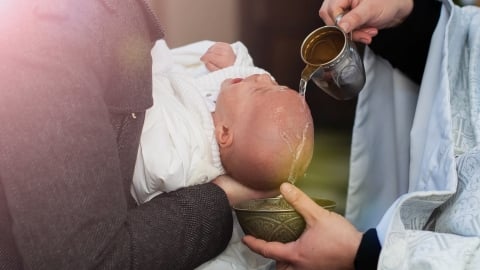A Tribute to St. Pius X on the Anniversary of His Canonization

On May 29, 1954, 70 years ago, Pope Pius XII canonized Pope Pius X in front of an innumerable crowd. Everyone saw this canonization as extraordinary, since one would have to go back to 1712 – the year in which Clement XI entered Pius V into the canon of saints (the pope of the Rosary, of Lepanto, and of the Mass) – to see the figure of a sovereign pontiff honored in such a way.
Through St. Pius X, who reigned from 1903 to 1914, Pius XII wanted to give an example to the entire Church of the sanctity of a pope, a “papal holiness” [1] able to guide the sheep in difficult times. In the beatification brief (June 3, 1951), Pius XII enumerated the principal traits worthy of attracting the attention and admiration of the crowds:
1.) Concern for the holiness of the clergy, the key to renewing all things in Christ, according to his sublime motto [2]. Pius X wanted a clergy who were distinguished by their piety, their obedience, and their knowledge.
2.) The renewal of ecclesiastical studies. Pius X exhorted Christian philosophers to defend the truth under the banner of St. Thomas Aquinas. He founded the Pontifical Biblical Institute in Rome, encouraging theological sciences, inspired exegesis, and carefully prepared preaching on the part of the clergy.
3.) Concern for the eternal salvation of souls. While Pius X wanted a holy clergy, it was with the idea of the instruction of the faithful that he gave a catechism, made for adults as well as children. Regarding children, he will forever remain the pope of the Eucharist, favoring early communion, but also – and for all – frequent and even daily communion.
4.) The defense of the Faith in its fullness and purity. The false teachings that represented all the errors were unmasked under the label of Modernism, and wisely repressed (Pascendi, September 8, 1907). In these circumstances, as in his fight against anticlerical laws and the secularist separation of Church and State, St. Pius X was, in the words of the Angelic Pastor, an “infallible teacher of the faith,” the “intrepid avenger of religion” and the “guardian of the freedom of the Church.”
5.) Love of the liturgy. Initiator of an authentic liturgical movement, Pius X renewed sacred music, as well as the Breviary, the calendar of feast days in a way to orient “the Church resolutely towards a liturgical life that is thoroughly imbued with traditional piety, sacramental grace, and inspired beauty” [3].
These are the main features of the sanctity of Pius X and the holiness of a period of governance totally penetrated with the grandeurs and supernatural riches that are the treasure of the Church. Pius XII also evokes the reforming work accomplished in the Roman Curia, in schools and parishes, and the formidable work of bringing together into a single corpus the hitherto dispersed laws of the Church (the Code of Canon Law, promulgated in 1917). There is also the attention Pius X paid to evangelization in the missions and also his appeals for unity to the “separated Oriental Christians.”
Pius XII canonized this pontifical holiness for a very specific purpose: in order to “dispose minds to confront our own struggles and to ensure our victories and those of future generations” [4]. Proclaimed “saint and guide of the men of today,” “apostle of the interior life,” St. Pius X is given as an “providential example for the modern world in which worldly society, becomes always more of an type of enigma to itself, anxiously seeking a solution to restore a soul! Let it therefore take as a model the Church gathered around her altars” [5]. Because this pope “aroused everywhere an immense movement of return to the splendors of the liturgy and sacred music, and banished ugliness from the holy temple of God” [6].
He organized Catholic Action on a sound basis and promoted the social and professional activities of Catholics within a confessional framework. For people and all men of good will, so that they find access to Jesus Christ in the Church. This was his first concern, Pius XII explains, because God “is the origin and foundation of all order, of all justice, of all right in the world. Where God is, order, justice and law reign.” Hence the great project of the pontificate of Saint Pius X to organize the law of the Church. Hence again the primacy of faith and sound doctrine which was “the ultimate service of charity, rendered by a Saint, as Head of the Church, to all humanity” [7].
Finally, for the enemies of the Church, this canonization was performed so that they may know the intrepidity and the strength that only God can give to his Vicar on earth and, through him, to His children spread throughout the world. Emblematic was the courage with which Pius X rejected the laws separating Church and State; he “gave France, cruelly persecuted, new bishops, and resisted the attacks of the wicked” [8]. 70 years ago, this what Pius XII showed as an example to the world: the very papal holiness of a worthy and true successor of Peter. He had accepted the honor of the supreme pontificate “like a cross” – accepto in crucem. He carried it out like a saint.
To know St. Pius X better:
- Pontifical documents of H.S. St. Pius X, Publications of the Courrier de Rome, 2 vols. 1993
- St. Pius X, Vu de Haut, revue de l’Institut Universitaire Saint-Pie X, n°11 (2003) et n°18 (2011).
- Yves Chiron, Saint Pius X, Reformer of the Church, Publications du Courrier de Rome, 1999.
[1] Expression of Fr. V.-A. Berto, in an article published in La Pensée Catholique, 1951, n°19, p. 27 and included in the collection For the Holy Roman Church, Editions du Cèdre, 1976, p. 95.
[2] “Omnia instaurare in Christo” [to restore all things in Christ]; phrase of St. Paul (Eph 1, 10) taken up as the motto of the pontificate in St. Pius X’s first encyclical, E supremi apostolatus, October 4, 1903.
[3] O. Rousseau, History of the liturgical movement, Paris, Cerf, 1945, p. 201.
[4] Address of June 3, 1951 (beatification) in Catholic Documentation n°1097, col. 713-720.
[5] Address of May 29, 1954 (canonization) Catholic Documentation No. 1175, col. 711-716.
[6] Fr. Victor-Alain Berto, “Holiness of Pius X,” in For the Holy Roman Church, op. cit., p. 98.
[7] Speech of May 29, 1954.
[8] Ibid..
(FSSPX–Actualités du 29/05/2020)





